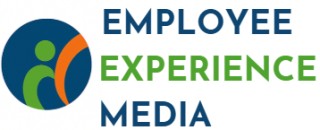
Understanding the Importance of Skills Gap Analysis
Grasping the Value of Identifying Skill Gaps
Understanding how to pinpoint skill gaps within an organization is crucial for enhancing overall employee performance. A skill gap analysis is a structured approach that helps recognize the difference between current skills held by the team and those required to meet business goals effectively. Recognizing these gaps early will not only boost productivity but also tailor professional development initiatives. Conducting skills gap assessments paves the way for a more comprehensive action plan, aligning the workforce's competencies with strategic business objectives. By identifying areas of improvement, organizations can better allocate their resources for targeted training, ensuring that employees are equipped with the necessary soft skills and technical abilities to excel in their roles. Several companies have harnessed the power of skills gap analysis to strengthen their workforce and maintain a competitive edge. Actionable insights derived from these analyses help fill performance gaps and drive learning development. Notably, organizations can derive enhanced insights by utilizing a skills gap analysis template, adopting a systematic step-by-step approach to identify and explore possible skills gaps within the team. As you explore career opportunities within your organization, understanding these elements can be transformative, offering clarity and direction in nurturing career growth. You might also be interested in exploring career opportunities that prioritize such proactive talent development measures.Key Components of a Skills Gap Analysis Template
Essential Elements for Optimal Skills Gap Analysis
Conducting a meaningful skills gap analysis involves understanding crucial components that form a comprehensive template. Identifying these elements ensures a structured approach, making it easier to fill skill gaps in your organization effectively.- Current State Evaluation: The first step is to assess the present skill levels of employees. Understanding the current state of skills across teams helps identify immediate areas for improvement and sets the stage for further analysis.
- Desired Skills Mapping: Outline the skills needed to meet your business goals. Align these skills with specific roles to give a clear vision of the organizational objectives. This comparison between current skills and desired skills is central to identifying gaps.
- Identifying Skill Gaps: Utilize the skills gap analysis template to systematically identify gaps between current skills and those required for future performance. This structured analysis will help you plot a course to fill these gaps efficiently.
- Action Plan Development: Formulating an actionable plan to address skill gaps is crucial. This involves setting specific learning objectives and defining training or mentorship opportunities. Check out this effective mentorship program template for enhancing employee experience.
- Performance Metrics: Develop quantitative metrics to measure the progress of your skills gap analysis. This will help in tracking improvements and ensuring that your action plans translate into real performance enhancement.
- Continuous Updating and Review: The skills gap analysis is not a one-time task. Regular reviews of the analysis will help keep the template aligned with evolving organizational needs and industry standards.
Implementing the Skills Gap Analysis in Your Organization
Executing a Skills Gap Analysis in Your Business
To conduct a successful skills gap analysis in your organization, there are certain essential steps and considerations to follow. Each step will build upon the last and should align with your business goals, helping you fill the gaps in skills and improve employee performance effectively.- Identify the Skills Needed: Begin by identifying the skills necessary for achieving your business objectives. This includes hard skills, soft skills, and any specific technical skills required by your team. Consult with the relevant departments and leaders to ensure a comprehensive understanding of the skills needed.
- Evaluate Current Skills: Assess the current state of skills within your team. This can be achieved through employee assessments, performance reviews, and using a skills gap analysis template. Understanding the current skills will help pinpoint areas needing improvement and inform the gap analysis.
- Analyze Skill Gaps: Compare the skills needed with the current skills to identify gaps. This step involves the use of gap analysis templates, which can be found for free online, to systematically evaluate where the deficiencies lie within your organization.
- Create an Action Plan: Develop a step-by-step action plan to address these skill gaps. This may include learning and development programs, targeted training sessions, or hiring strategies to bring in new skills.
- Implement and Monitor: Execute the action plan and continuously monitor progress. This involves setting goals and metrics to track improvements in the areas of training and learning development over time.
Overcome Common Hurdles
Organizations may encounter challenges in conducting skills gap analyses, such as lack of time, resources, or resistance to change. Developing strong analysis skills and maintaining a clear focus on the organization's long-term goals will help overcome these obstacles. For a deeper dive into navigating challenges related to employee needs, consider reading about underpaid employees' requests that may affect skill acquisition plans.Common Challenges in Conducting Skills Gap Analysis
Overcoming Barriers in the Skills Gap Process
Conducting a skills gap analysis can sometimes be met with hurdles that may hinder its effectiveness. Recognizing these challenges early on can help in implementing strategies to overcome them. Below are some common challenges and how organizations can address them to ensure successful outcomes.
- Identifying Accurate Skill Needs: One major challenge is accurately determining the skill gaps between the current skill set of employees and the skills needed to achieve business goals. This requires a thorough understanding of both the current state and future objectives of the organization.
- Employee Engagement and Buy-In: For a skills gap analysis to be successful, it’s crucial that employees are fully engaged. Lack of engagement can lead to inaccurate data and a failure to truly address skill gaps. Involve employees by clearly communicating the purpose and benefits of the analysis to gain their support.
- Resource Limitations: Limited time and resources can be significant barriers. Conducting a comprehensive analysis requires dedicated time from both HR and managerial teams. Adopting a free template can help streamline the process and ensure efficiency.
- Consistency in Data Collection: Inconsistencies in data can lead to erroneous analysis results. Establish a standard template for data collection to ensure uniformity and reliability in capturing the necessary employee performance and skill data.
- Adapting to Rapid Change: The dynamic nature of work means that the skills needed today may not be relevant tomorrow. Regular updates of the analysis templates and continuous learning and development programs will help keep the organization aligned with evolving skill requirements.
Addressing these challenges with a structured action plan can significantly enhance the effectiveness of the skills gap analysis. Organizations should view these barriers as areas for improvement, leveraging both qualitative and quantitative methods to fill the identified gaps and align with business goals.
Leveraging Technology for Skills Gap Analysis
Maximizing the Role of Technology in Identifying and Bridging Skill Gaps
Effectively leveraging technology is a crucial step in conducting a comprehensive skills gap analysis. By employing digital tools and platforms, organizations can efficiently identify skill gaps and streamline processes to address them. Here are key ways technology enhances skills gap analysis:- Efficiency in Data Gathering and Analysis: Using software solutions, organizations can collect and analyze vast amounts of data related to employees' current skills and performance. This technological approach reduces the time spent on manual data collection and increases the accuracy of the gap analysis.
- Utilizing Skills Gap Analysis Templates: Many tech platforms offer free templates that can assist human resources teams in systematically conducting their analyses. These templates often come standardized, ensuring consistent data across various departments.
- Customized Learning and Development Plans: Once skill gaps are identified, technology helps create personalized training programs to address areas of improvement. Software solutions offer the agility to adjust these programs in real-time to ensure alignment with current business goals and objectives.
- Integration with Performance Management Systems: When integrated, technology enables continuous monitoring of employees’ progress, providing insights into the effectiveness of training initiatives and ensuring that skill gaps are being filled effectively.
- Facilitating Communication and Collaboration: Platforms can boost collaboration within the team by enabling better communication lines. Employees can more easily share insights, challenges, and solutions related to their skills development, fostering a culture of learning within the organization.













